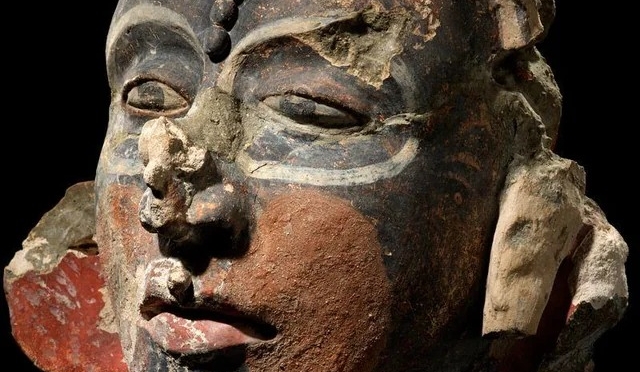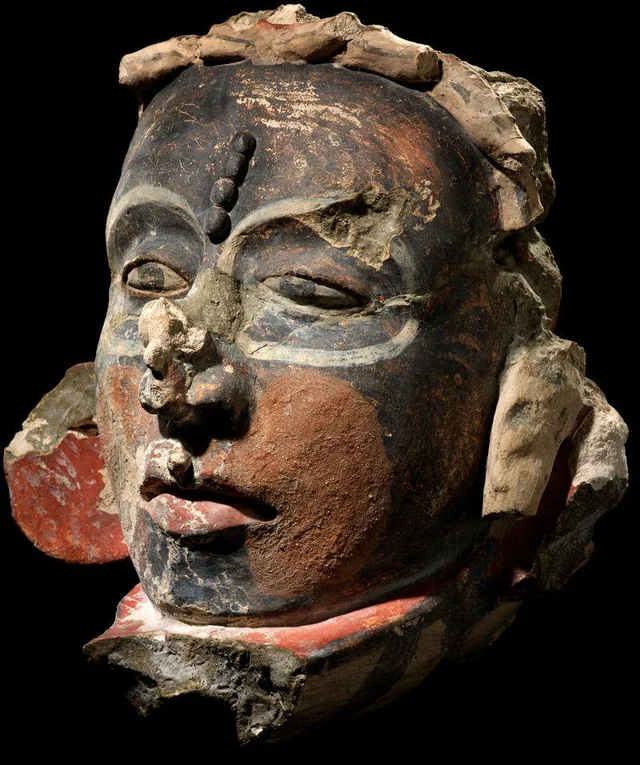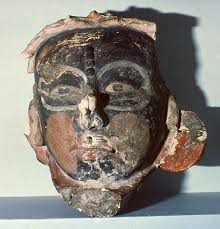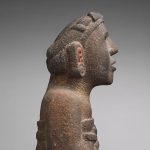Maya Portrait Head

This portrait head originates from Uxmal, Mexico, and dates to ca. 300–900 AD during the Maya Classic period. It is part of the Smithsonian’s National Museum of the American Indian collection.

This modeled stucco head from the site of Uxmal was likely part of an architectural ornament and may depict a member of the ruling lineage or pay tribute to an esteemed ancestor. It is associated with the structure known as the Governor’s House, whose principal decorative theme features overlapping stone-carved masks of the rain god Chaak. In grand temples and palaces, projecting sculptures played a vital role in architectural design, often portraying mythological beings or royal figures, while inscriptions served not only a decorative purpose but also communicated important messages to viewers.

Modeled stucco—a lime-based plaster—was among the most refined artistic media developed in pre-Columbian Mesoamerica. Entire cities were once coated in stucco, from architectural sculpture and freestanding figures to wall surfaces and floors.
The finely crafted face on this piece can be read as an ancient portrait, complete with ear ornaments and a headband, though its distinctive body paint likely alludes to ceremonial functions. Sadly, due to its fragility, stucco—particularly when applied to exterior walls—was the first to deteriorate once buildings were abandoned. As a result, stucco artworks are relatively rare among Maya artifacts today. This example stands out as especially significant, both for its preserved coloration and for the exceptional skill of the artist who created it.











